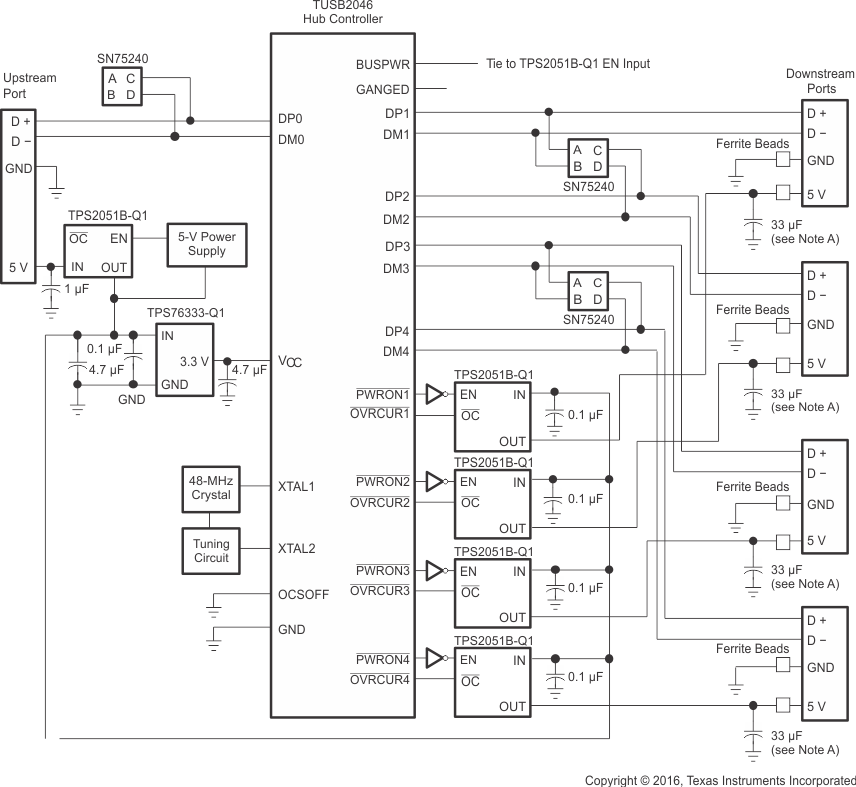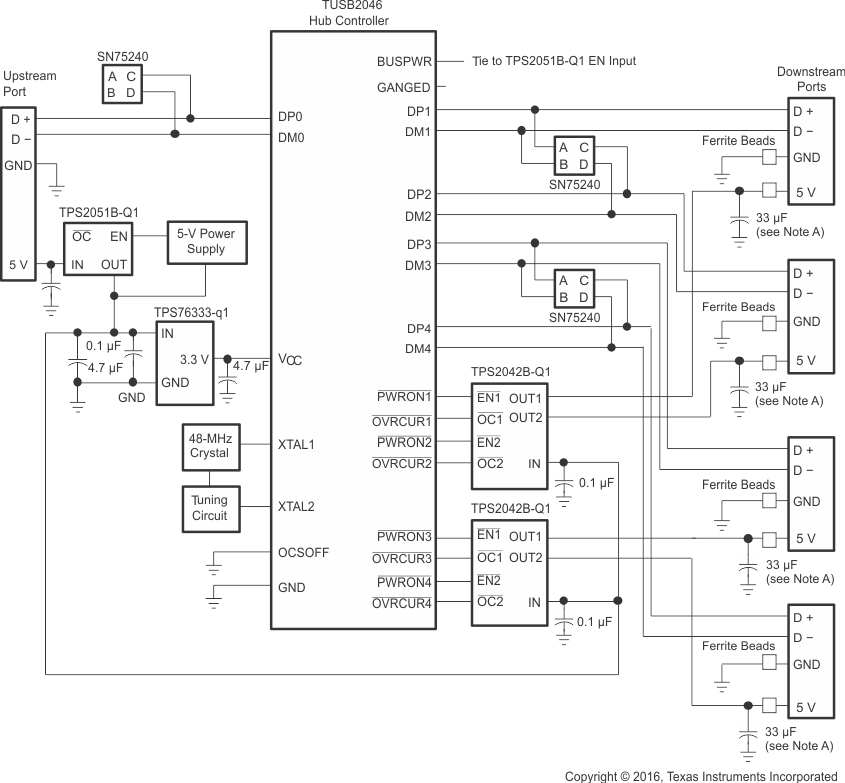SLVS782D November 2007 – October 2020 TPS2041B-Q1 , TPS2042B-Q1 , TPS2051B-Q1
PRODUCTION DATA
- 1 Features
- 2 Applications
- 3 Description
- 4 Revision History
- 5 Pin Configuration and Functions
- 6 Specifications
- 7 Parameter Measurement Information
- 8 Detailed Description
- 9 Application and Implementation
- 10Power Supply Recommendations
- 11Layout
- 12Device and Documentation Support
- 13Mechanical, Packaging, and Orderable Information
Package Options
Mechanical Data (Package|Pins)
- DBV|5
Thermal pad, mechanical data (Package|Pins)
Orderable Information
9.2.2.1.1 USB Power-Distribution Requirements
USB can be implemented in several ways, and, regardless of the type of USB device being developed, several power-distribution features must be implemented.
- Hosts and self-powered hubs must:
- Current-limit downstream ports
- Report overcurrent conditions on USB VBUS
- Bus-powered hubs must:
- Enable and disable power to downstream ports
- Power up at < 100 mA
- Limit inrush current (< 44 Ω and 10 µF)
- Functions must:
- Limit inrush currents
- Power up at < 100 mA
The feature set of the TPS204xB-Q1 and TPS205xB-Q1 allows them to meet each of these requirements. The integrated current-limiting and overcurrent reporting is required by hosts and self-powered hubs. The logic-level enable and controlled rise times meet the need of both input and output ports on bus-powered hubs, as well as the input ports for bus-powered functions (see Figure 9-12 and Figure 9-13).

USB rev 1.1 requires 120 µF per hub.
Figure 9-12 Hybrid Self-Powered or Bus-Powered Hub Implementation (TPS2051B-Q1)
USB rev 1.1 requires 120 µF per hub.
Figure 9-13 Hybrid Self-Powered or Bus-Powered Hub Implementation (TPS2042B-Q1)